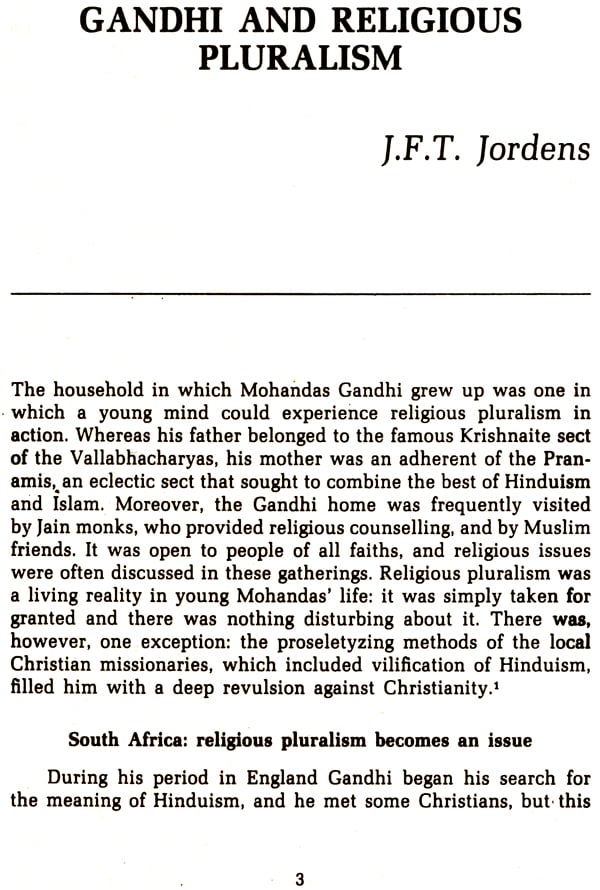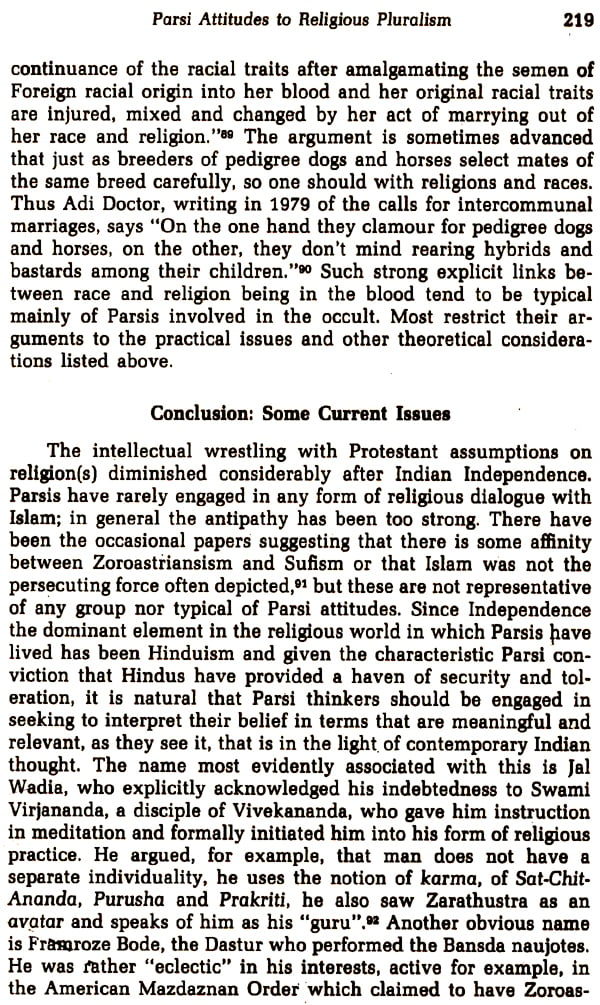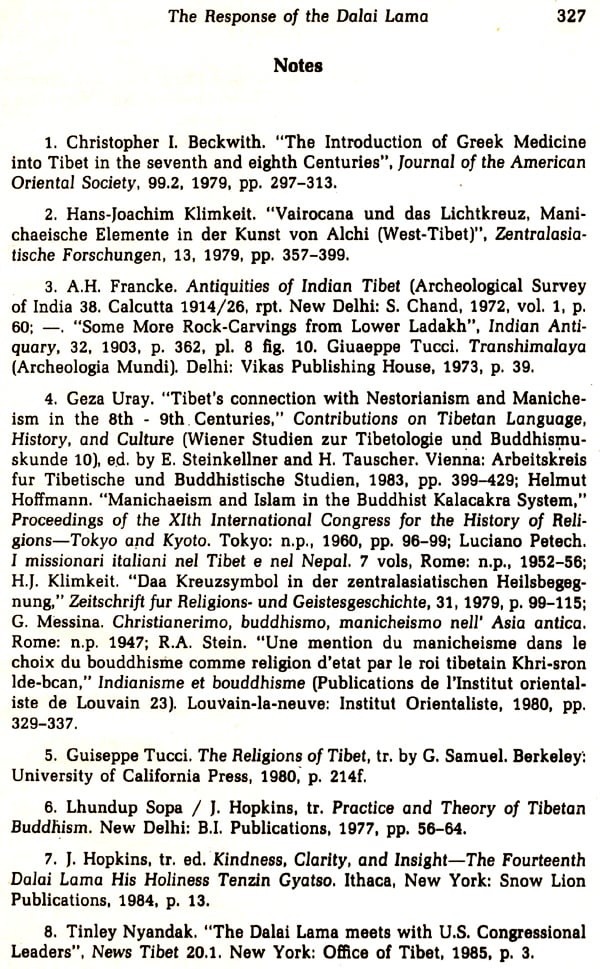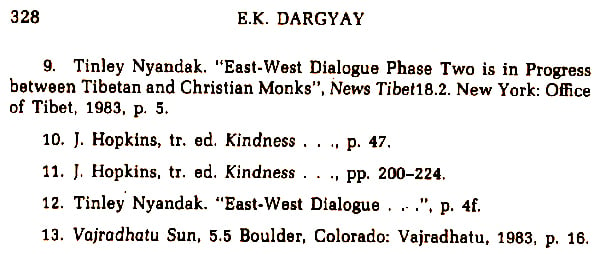Your cart is empty now.
The Study of Modem Indian responses to the challenge of pluralism reveals the out-come of 2500 years of experience in this 'living laboratory' of religious encounter, and offers wisdom to the modern West in its relatively recent encounter with this challenge. A remarkable team of scholars joins forces in this book to examine how religious pluralism actually functions in India. It focuses on both the responses from within Hinduism and of other religious pluralism actually functions in India. It focuses on both the responses from within Hinduism and of other religions in India, with chapters on Parsis, Indian Islam, Indian Christianity, Sikhism, and Tibetan Buddhism. The contributors are -J.F.T. Jorden, J.N. Pankratz, H.G Coward, R. W. Neufeldt, R.N. Minor, R.D. Baird, K.K. Klostermaier, K. Sivaramana, J.G. Arapura, J. Hinnels, R.E. Miller, J. Lopner, E.K. Dargyay. The book contains an index.
Harold G. Coward is Professor of Religious Studies and Director of Religious Studies and Director of the Humanities Institute at the University of Calgary. In addition to Jung and Eastern Thought, Cowards' s books include Bhartrhari, Sphota Theory of Language, Studies in Indian Thought, and Pluralism : Challenge to World Religions
Religious experience has been defined as the quest for ultimate reality. Many religions exhibit an inner tendency in pursuing this quest to claim to be the true religion, to offer the true revelation as the true way of salvation or release. It would seem self-contradictory for such religions to accept any expression of ultimate reality other than their own.1 Yet one of the things that characterizes today's world is religious plurality. In the past century the breaking of cultural, racial, linguistic and geographic boundaries is on a scale that the world has not previously seen. For the first time in recorded history we seem to be rapidly becoming a true world community. Today the West is no longer closed within itself. It can no longer regard itself as being the historical and cultural center of the world and as having a religion that is the sole valid way of worship. The same is true for the East. Today everyone is the next-door neighbour and spiritual neighbour of everyone else.
India has perhaps been living through this pluralistic challenge longer than the rest of us. Well before the advent of Christianity and Islam in the West, India was already experiencing he encounters of Hinduism, Buddhism and Jainism with one another. Other religions soon arrived to share India with the :--iindus, Buddhists and Jainas. Christians seem to have been present in India early-perhaps as early as the arrival of Jesus' disciple Thomas in the first century c.E.2 A small community of Jews also settled in India in Malabar, at Cochin, perhaps as early as the first century C.E. There is evidence of small Muslim communities many of the coastal towns of the Indian Peninsula from the Eighth century onwards.3 But from about 1000 C.E. North-West India experienced increasing invasion and occupation from Muslim emperors in Afghanistan until Islam became the dominant religion of the region.4 In the ninth century C.E. a group of Zoroastrians left Persia to escape Muslim persecution and settled on the north-west coast of India. Their descendants still live there and today are known as Parsis. In the fifteenth century, in the midst of Hindu-Muslim turmoil yet another religion, the Sikh religion, was born with the aim of bringing peace to the conflicting encounter of religions.5 Thus India, perhaps moreso than any-where else, became a virtual "living laboratory" of religious pluralism with many of the world's religions living together in the same communities over several centuries.
What has been the result? The aim of this book is to examine the way in which the various religions are responding to the challenge of living side by side with one another in modern India. Since Hinduism, the dominant religion in India, considers itself, and is considered by many others, to be a very tolerant religion, the study of how religious pluralism actually functions in India is especially fascinating. The book is divided into two parts. Part One focuses on the dominant religion, Hinduism, and examines how it has responded to the challenge of having other religions living in its midst, and more recently, to the awareness that it is living in a global community side by side with other religions. The responses from within modern Hinduism are strongly shaped by the Hindu Renaissance movements of the Brahmo Samaj, the Arya Samaj, the Ramakrishna Mission, Aurobindo, Gandhi and Bhaktivedanta, and each of these is studied in a separate chapter. The chapter on Gandhi is presented first as a helpful way into the Indian experience for the Western reader. Responses of two mainline streams from within Hinduism, Vaisnavism and Saivism, are examined. Finally the modern Indian philosophical response, which centers itself largely within Hinduism, is surveyed.
In Part Two the focus shifts from the dominant religion of Hinduism to the other religions within India and to their responses to the challenges of religious pluralism. Separate chapters are given to the Parsis, the Indian Muslims and the Sikhs. A particular Christian response-typical of the Calcutta area, but not of the many other communities of Indian Christians-is examined. Finally the dominant form of Buddhism now present in India, the Tibetan Buddhist community living in exile, is studied.
Because of space and other limitations not all religions living in India have been included in this book. Most notable by its absence is a consideration of the Jaina response.
Sample Pages










Delivery and Shipping Policy
- INTERNATIONAL SHIPPING
- Rs.1000-1100/kg
- ESTD. Delivery Time: 2-3 weeks (depending on location)
- Bubble Wrapped with Extra Padding
- NATIONAL SHIPPING
- NCR: Rs. 30/half kg
- Standard: Rs. 80/half kg
- Express shipments also available on Request
- ESTD. Delivery Time: Ranging from 1-4 days up to 7 business days (Depending on your choice of Delivery)
- TRACKING
- All orders; national or international, will be provided with a Tracking ID to check the status of their respective orders
- Depending on the Shipping Service, Tracking ID may be used on their respective tracking portals
Frequently Asked Questions (FAQs)
Domestic Shipping: 3-4 Days (after shipping)
International Shipping: 1-2 weeks (based on your location)
You will receive an email once your order has been shipped or you can email us if you didn't receive tracking details (info@mlbd.co.in)
Every book that we sell is the latest edition except all the rare books
Yes, we do provide free shipping, only on domestic orders (within India) above Rs.1500











